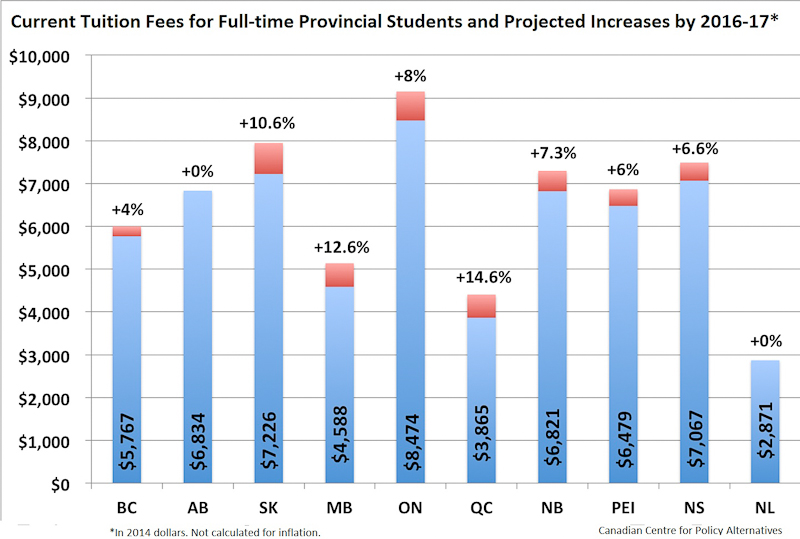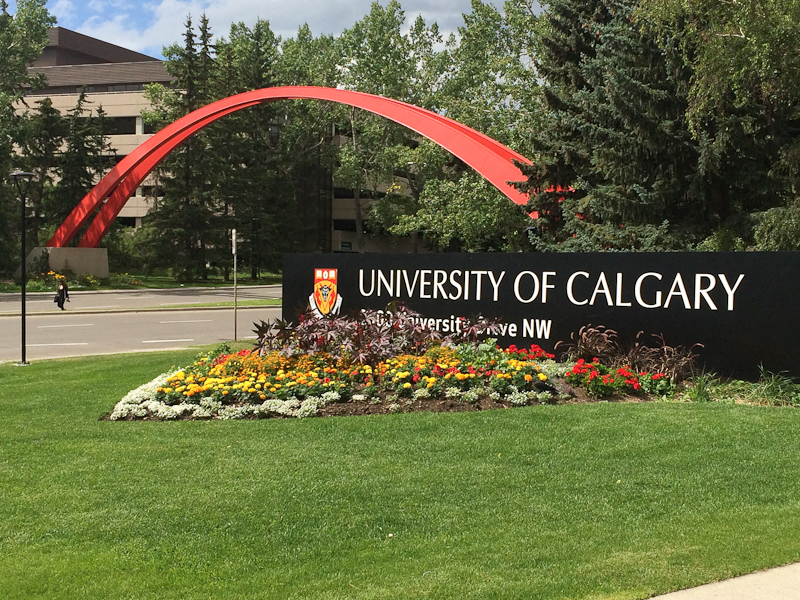Post-secondary students in Alberta won’t see a tuition fee hike when they return in the fall, as the province’s newly-elected NDP government has frozen tuition fee rates for the next two years.
The provincial government will cap tuition fee increases at the 2014-15 level for the 2015-16 and 2016-17 school years.
Leah Holoiday, press secretary for advanced education minister Lori Sigurdson, said Alberta has one of the lowest post-secondary participation rates in the country.
According to Holoiday, the government believes introducing a tuition freeze will “give students and families the predictability they need to plan for post-secondary education.”
Along with the freeze, the government is also decreasing “market modifiers,” a system where tuition fees are increased for specific degree programs.
Holoiday said $15 million has been given to post-secondary institutions in Alberta to offset the freeze. The government has also provided $28 million to reverse previous cuts to schools, and has added a two per cent increase in funding.
 According to Holoiday, this increase is meant to make education more affordable and improve the quality of the education received at university and college.
According to Holoiday, this increase is meant to make education more affordable and improve the quality of the education received at university and college.
Romy Garrido, vice-president of the Council of Alberta University Students (CAUS), said the freeze provides a solution to concerns students had following the removal of Alberta’s tuition cap policy two years ago. This policy previously ensured tuition could not rise above the rate of inflation, but was scrapped under former premier Jim Prentice.
“A two-year tuition freeze is a welcome answer, especially considering that the current government will be reviewing the entire funding model for post-secondary education during that time,” Garrido said.
According to Garrido, CAUS will be included in the review process and plans to advocate for continued predictability following the two-year freeze.
“CAUS has concerns with what will happen post-freeze. We do not want to see harmful tuition hikes once the freeze is removed, as we have seen in the case of Saskatchewan,” she said. “We are hopeful to see a system overhaul of funding and tuition.”
While questions have been raised about how the freeze applies to students who have already paid tuition for the 2015-2016 school year, Holoiday said those students will be refunded the difference through a rebate program co-ordinated with their given school.
Both Holoiday and Garrido said the freeze has received positive feedback from students, their families and Albertans overall.
“As CAUS, we continue to advocate for such things like mental health funding, as we believe it is crucial for the student experience,” Garrido said. “However, we consider investments in the cost of post-secondary [education] as crucial to eliminating the many barriers to accessing post-secondary in our province.”
According to a 2014 report by the Centre for Policy Alternatives, undergraduate tuition and compulsory fees for full-time Canadian students will rise on average 8.7 per cent between 2014-15 and 2016-17. Ontario undergrads pay the highest tuition fees with an average of $8,474. The average for Alberta is $6,834.
The lowest tuition fees are found in Newfoundland and Labrador, where a tuition freeze implemented in 2003 means students currently pay only $2,888.






